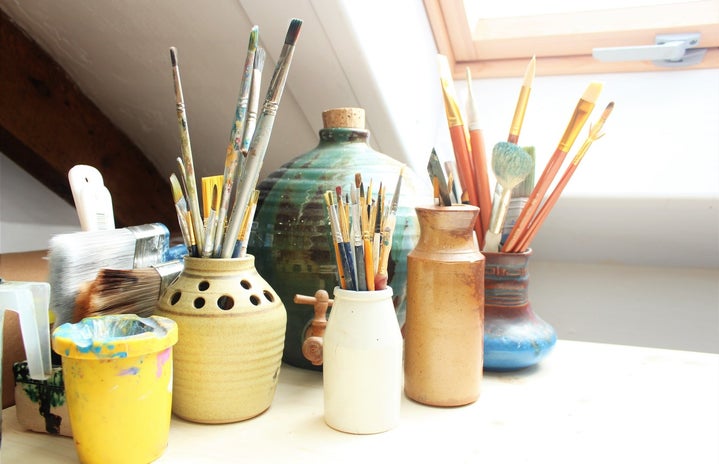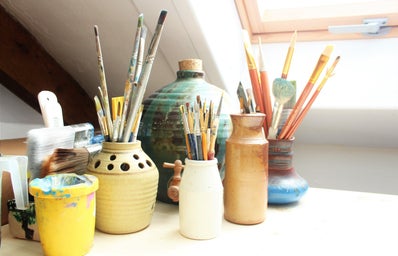Learning to cook, tending to sourdough starters, gaming, bullet journaling, and roller skating: over the last few months, we’ve seen a surge in activities that can be completed while social distancing, helping us stay safe and healthy during the pandemic. Fibre art is another creative pursuit that rose in popularity during lockdown, and the hype is unlikely to die down anytime soon. The art form has existed for thousands of years in one form or another and will continue to grow beyond the stereotype of an elderly woman knitting in a rocking chair. Much like other art forms, fibre art can be politically motivated and used as a feminist medium.
Fibre art is a subsection of textile art, but essentially is anything involving some kind of labour and the production of materials using fibre (either natural-like cotton, or synthetic fibres like acrylic yarn) and a tool, most often a needle or hook that is suitable for a particular method of crafting. Fibre art has been isolated to women and is hardly seen as creatively or politically significant, despite society’s reliance on the art to produce textiles, clothing and more. It has always been limited to a hobby rather than an art medium and skill when historically, creativity was key to amplifying women’s voices when they were silenced. Painting, writing, and crafting were tools women used to speak out against oppression.
Take, for example, Adrienne Rich’s poem “Aunt Jennifer’s Tigers”. An analysis of the poem reveals that Aunt Jennifer used embroidery as an escape from a difficult marriage, and the tigers in her work as a symbol of her desire for freedom from an oppressive relationship and societal expectations. This poem is set in the 1950s, and women continue to speak out through fibre art. Billie Zangewa is a Johannesburg-based fibre artist whose work is beautiful and thought-provoking, and one only has to drive through small towns to find women who have created social groups centred around quilt-making, sewing, and knitting and crocheting for charity. Fibre art is often driven by a desire for community and social change, and this is done quietly. Sometimes quiet, unassuming actions make the most noise.
One of the largest instances of fibre art activism in recent years was the 2017 Women’s March and the creation of Pussyhat Project, which saw fibre artists worldwide create pink hats with cat ears as a symbolic protest against misogyny, and particularly against comments made by Donald Trump before and during his first presidential campaign. While Pussyhat Project has been called out for being transphobic (due to its equation of female anatomy with womanhood, and biological sex with gender), its use in a global march against a form of oppression shows fibre art’s ability to unite millions (approximately seven million people worldwide) and have a political purpose.
Speaking of millions united, global lockdowns due to the COVID-19 pandemic left people with a lot of free time waiting for the world to open up again. Many people who got hooked on TikTok early in lockdown were mocked, but as the app’s popularity grew, more creators became visible and the interest in fibre art, especially knitting and crocheting, grew. The art form became popular because it’s a relatively cheap hobby to start and continue once you have supplies (literally just a hook or needles and yarn of your choice). There are also thousands of free resources available online, ranging from how-to’s and patterns to yarn recommendations and hook reviews, all of which make the art-form accessible.
I taught myself to crochet during lockdown and can safely say that I am now addicted. I have a suitcase full of various yarns, a box of backup yarn, several sets of crochet hooks, at least four unfinished projects (called WIPs – Works In Progress), and a travel bag for when I want to work on the go. If you’re looking for something fun to do that doesn’t involve looking at another screen, is easy to learn on your own and is a useful and interesting skill, fibre art is the way to go.
Here are a few easy project recommendations for beginners (patterns can be found online for free, or you can support pattern makers through purchasing from their websites or Etsy):
-
Scarves and blankets: basic stitches, any size yarn and hook
-
Beanies: straight stitches or knitted/crocheted in the round
-
Amigurumi figurines for advanced beginners


